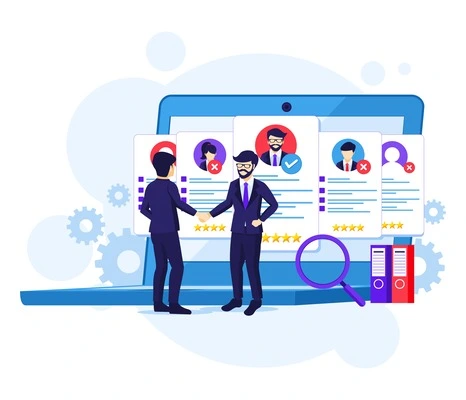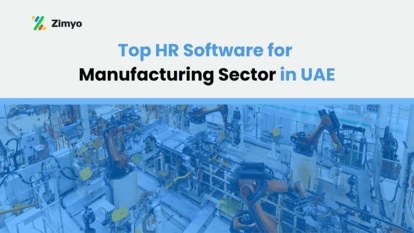With talent being the degree of success for an organization in today’s age, how organizations pull in, screen, and hire employees has been transformed. As we enter 2025, the Applicant Tracking System (ATS) is now not a nicety — it is a business necessity. But every ATS differs. Intelligent, flexible, and inclusive systems are what today’s listing requires. Hence, in this blog, we’ll jump profound into the essential ATS highlights that organizations must embrace in 2025 to remain ahead of the curve.
Why an ATS Matters More Than Ever in 2025
Before jumping into features, it’s imperative to get it why an ATS is irreplaceable in today’s recruitment ecosystem.
Firstly, businesses are managing with a growingly competitive labor showcase. Employments are getting more specialized, candidate desires are changing, and mixed work arrangements are modifying the way and where we hire. In this respect, physically handling applications, CVs, and interviews isn’t possible anymore.
Besides, with the growing emphasis on data-driven hiring, organizations require tools that give noteworthy insights, eliminate, and offer assistance make educated choices speedier. Usually where a modern ATS plays a essential part.
Key Benefits of an Applicant Tracking System
Presently that we’ve set up its importance, let’s explore some of the most impactful benefits of utilizing an Applicant Tracking System in 2025.
• Streamlined Recruitment Workflow
An Applicant Tracking System presents structure and consistency to the hiring process. From sourcing and screening to planning interviews and making offers, it streamlines repetitive tasks and keeps everything in one place.
• Enhanced Candidate Experience
In today’s candidate-driven market, to begin with impressions tally. ATS stages empower a smooth, proficient involvement with convenient updates, easy-to-use application forms, and mobile-friendly interfaces — all of which boost employer branding.
• Accelerated Time-to-Hire
With capabilities such as AI screening, automated email, and in-built planning, recruiters can overcome and fill openings more rapidly. As a result, companies cut productivity holes and attract top entertainers before the competition does.
• Data-Driven Hiring Decisions
An ATS doesn’t simply hold resumes; it provides in-depth analysis on hiring performance, sourcing media, candidate activity, and beyond. These metrics enable HR leaders to refine strategies on what truly works.
• Security and Compliance
As the world’s regulations regarding candidate data and privacy change, a quality Applicant Tracking System keeps your recruitment process entirely compliant. There are features such as consent management, and safe storage to safeguard the company as well as the candidate.
• Scalability for Growth
As your business expands, so does your recruitment volume. A scalable ATS allows your team to handle high-volume hiring — be it for growth, seasonal fluctuations, or swift project-based hiring.
The Evolving Role of ATS in 2025
Firstly, the conventional function of Applicant Tracking System was to sort resumes and put candidate information in order. Fast forward to 2025, the part of an ATS has changed significantly. Nowadays, it is expected to automate the hiring process, improve diversity, support multiple platforms, and eventually convey a smooth candidate as well as recruiter experience.
With hybrid work designs, global recruitment, and skills-first hiring getting to be increasingly well known, it’s basic that businesses embrace next-gen ATS stages with highlights that back modern HR goals. Let’s talk about these must-have features in detail below.
1. AI-Powered Candidate Matching
Firstly, intelligent candidate management is at the core of effective contracting in 2025. Driven by fake insights and machine learning, this functionality permits Applicant Tracking System to move beyond keyword matching. Or maybe, they examined the setting of resumes, work portrayals, and past hiring data to propose the best-fitting candidates.
Furthermore, AI-driven systems minimize unconscious inclination through candidate profiles and basing choices on skills and experience alone. This, consequently, results in more diverse hiring choices.
- Accelerated shortlisting
- Enhanced quality of hire
- Bias reduction
2. Skills-Based Screening
Second, with organizations breaking away from traditional degree-based requirements, skills-based hiring is taking center stage. Therefore, an effective Applicant Tracking System must enable skills-first filters and tagging mechanisms that rank candidates on the basis of technical and soft skills.
Moreover, the platforms need to enable recruiters to allocate weightage to individual competencies such that the recruitment decisions are backed by data and objective.
Why it Matters
- Encourages diversity
- Compatible with the gig and freelance economy
- Recruits candidates from non-traditional sources
3. Seamless Career Site Integration
Additionally, the candidate experience starts long before an application is ever submitted. In 2025, businesses will need to invest in a branded, mobile-optimized career site that integrates into the Applicant Tracking System.
Not only does this give a boost to employer branding, but it also provides a frictionless experience for applicants — from job view to applying.
Features to Look For
- Mobile responsiveness
- Multilingual support
- UI/UX customisation
- Real-time job
4. Automated Communication & Chatbots
Candidate engagement is not to be forgotten. Therefore, contemporary Applicant Tracking System needs to include automated communication capabilities, e.g., email/SMS triggers for job application updates, interview scheduling, and reminders.
Advanced systems also provide AI chatbots capable of responding to FAQs, capturing documents, and even pre-screening candidates — all in real-time. That increases engagement while lowering recruiter workload.
Why It's a Game-Changer
- Improves candidate experience
- Time-saving for recruiter
- Informs and keeps applicants engaged
5. Collaborative Hiring Tools
Besides automation, collaboration is a standout theme in 2025’s hiring approaches. A good Applicant Tracking System will have features such as collective interview feedback, scorecards, and centralized comment threads.
Consequently, hiring supervisors, team leads, and recruiters can all contribute to the decision-making prepare, ensuring consistency and avoiding hiring bias.
6. Analytics and Insights
It should also be emphasized that recruitment in the absence of analytics is similar to flying blind. A mandatory ATS in 2025 would need to include integrated dashboards and predictive analytics that offer insights into essential hiring metrics including:
- Time to Hire
- Source to Hire
- Application drop-off rates
- Diversity ratios
Even more importantly, predictive analytics can predict talent deficits, skill disparities, and future hiring requirements — allowing HR teams to be anticipatory and not reactive.
7. Data Compliance and Security
With the strengthening of data privacy rules and the data protection regulations of the UAE, Applicant Tracking System platforms need to be completely data compliant with global as well as regional regulations.
Apart from compliance, the platform should also provide data encryption, storage in a secure manner, and access on the basis of roles to avert unauthorized use.
8. Custom Workflows and Automation
nother 2025 trend that is gaining momentum is custom recruitment workflows. Each company has its specific hiring requirements — whether it is for mass hiring, campus hiring, or C-suite appointments.
Therefore, an adaptive ATS must enable users to create workflows that correspond to their own processes. Automation (e.g., to send a test following application or advancing candidates after interviews) make things even easier and more efficient.
9. Mobile Accessibility for Recruiters
More and more recruiters are on the move. Whether interviewing, meeting stakeholders, or visiting events, they need access to candidate information everywhere.
Therefore, a Applicant Tracking System should come with a fully-supported mobile app or adaptive web dashboard. CV review,
10. Integration with HR Tech Ecosystem
Finally, an ATS doesn’t operate in a vacuum. It should integrate smoothly with other solutions in your HR tech ecosystem — including:
- Payroll & HRMS platforms
- Background verification tools
- Video interview platforms
- Assessment engines
- Job boards and social media
These integrations not only save time but also create a single source of truth for all recruitment activities.
Bonus: DEI Tools for Inclusive Hiring
As organizations prioritize DEI (Diversity, Equity, Inclusion), an Applicant Tracking System with built-in DEI analytics, inclusive language recommendations, and bias alerts will prove invaluable.
Some platforms also allow blind screening by hiding personal identifiers like name, gender, and education, allowing for truly merit-based hiring.
Final Thoughts
In short, the demands placed on Applicant Tracking System in 2025 are much greater than resume gathering. Now, an ATS needs to be intelligent, adaptable, secure, and inclusive. From AI-driven matching and skills-based filtering to mobile optimization and DEI capabilities, recruiters and HR departments require a solution that enables them at each point of the hiring process.
Thus, prior to an investment in an ATS, organizations must examine if the platform is aligned with the contemporary recruiter’s workflow, bettering the candidate experience, and integrating well with the entire HR ecosystem.
Keep in mind, the proper ATS is not merely a tool — it’s a strategic collaborator in creating high-performing, future-proof teams.
Book a Demo for the assistance in selecting the optimal ATS for your company in 2025
Frequently Asked Questions (FAQs)
An ATS helps in optimizing the hiring process by managing candidate data, streamlining workflows, encouraging team collaboration, and supporting analytics for making strides hiring choices.
Though numerous ATS platforms are in common utilization, ATS such as Zimyo, ojoor and Workday are among the foremost popular ones since of their solid features and integrations.
- It speeds up the recruitment process by mechanizing shortlisting and scheduling.
- It moves forward candidate experience by encouraging timely communication and consistent application forms.
- It supports well-informed choices with real-time hiring analytics and collaboration.












